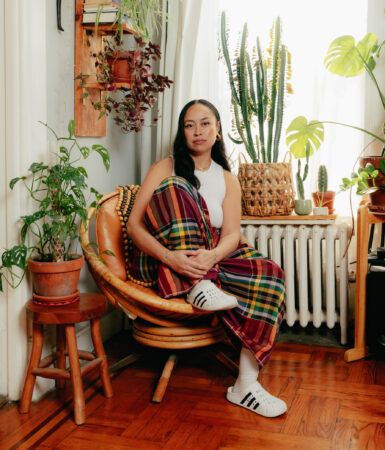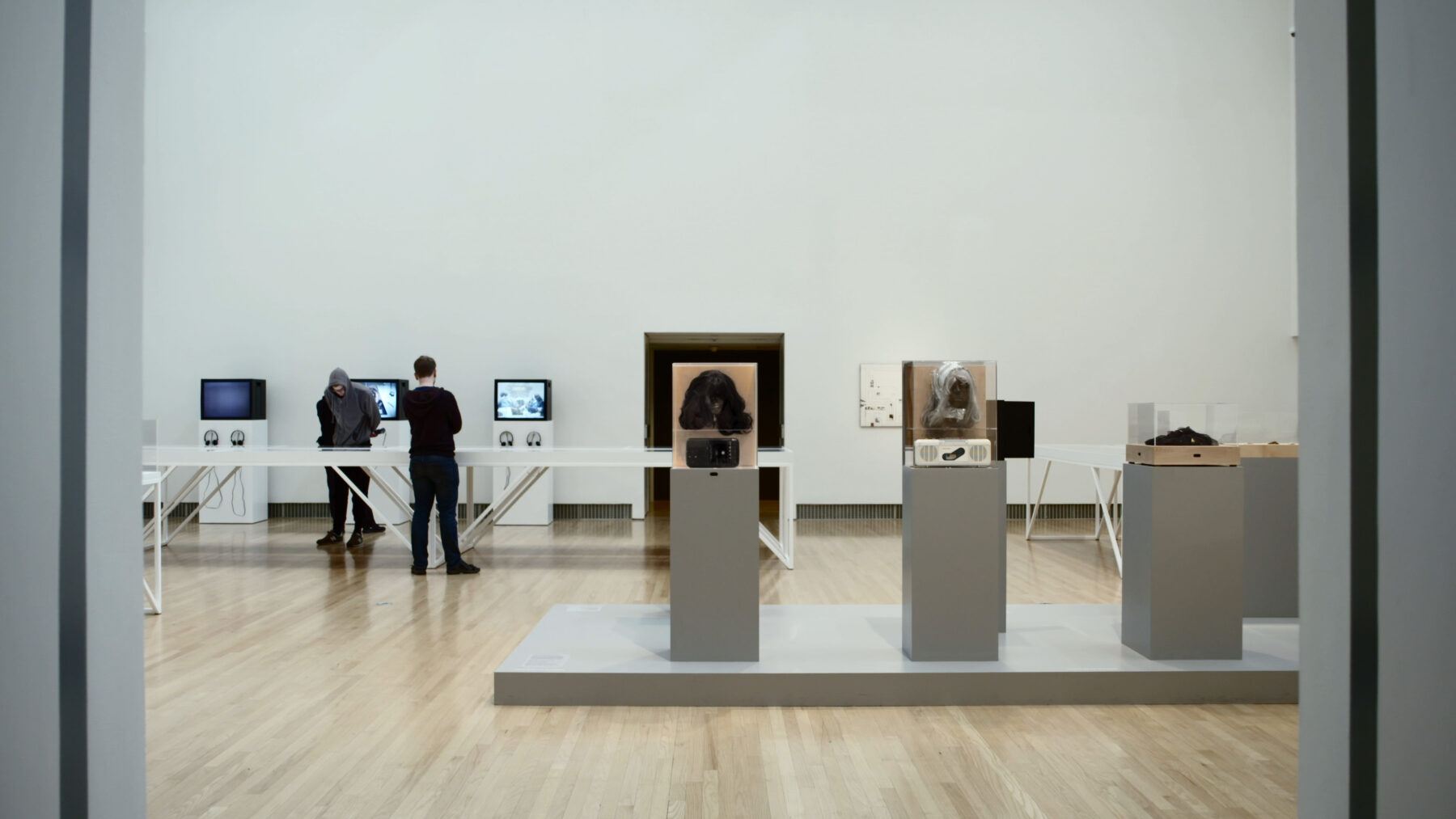
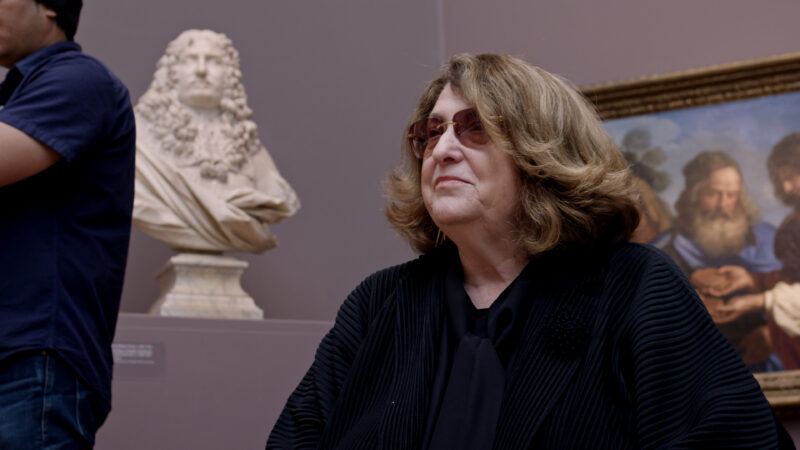
In the Studio
Lynn Hershman Leeson couldn’t give up on being an artist.
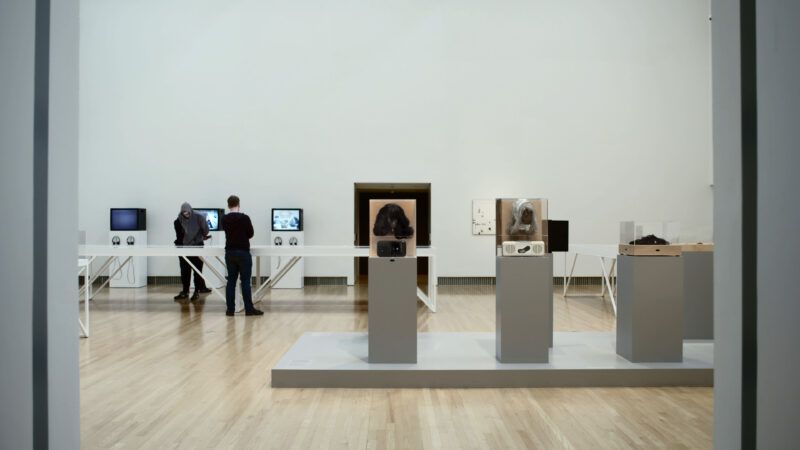
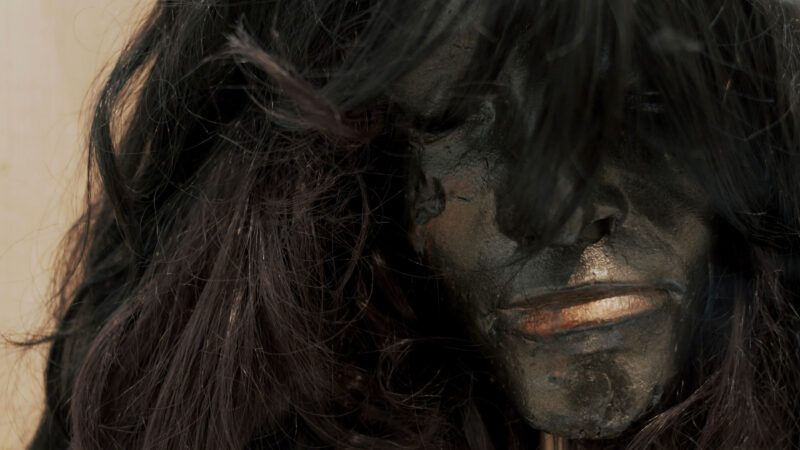

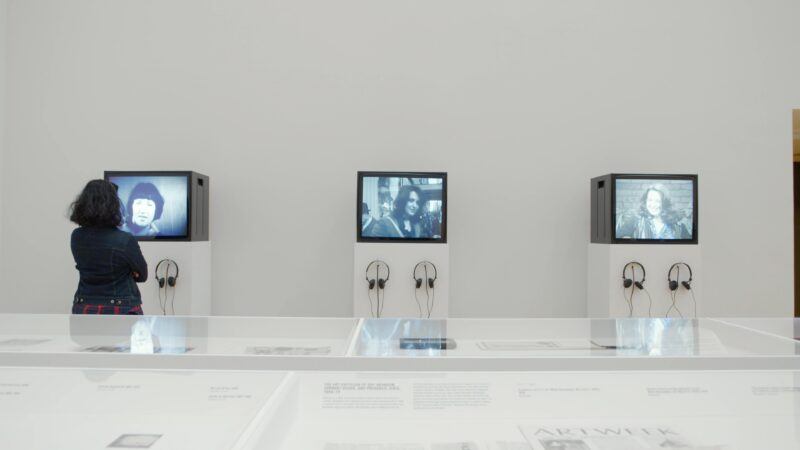

Christine Turner – What challenges did you face as an artist early on in your career?
Lynn Hershman Leeson – The early challenge was getting somebody to show my work, because nobody would. The way I solved that was that I finished my degree at San Francisco State, but I didn’t finish it in the art department. I did my master’s thesis on art criticism. In order to do art criticism, I created three different fictional critics and they each had different names.
One of the names was a translation of Yerba Buena, which was Herbert Goode, another critic I had was Prudence Juris, and the third was Gay Abandon. These three critics would write in varying styles for very different kinds of magazines, from sophisticated European art criticism books to throwaway news that you put on people’s doorsteps. But one thing that they had in common was that they would write about Lynn Hershman and Lynn Hershman’s work.
So, I finally had all these reviews about my work, which I took to galleries, and that’s how I got my first show. And people say, “Well, isn’t that dishonest?” Well, it’s more dishonest to not show women and not to consider even looking at your work if you’re female. So that was how I got my early start.
That sounds subversive.
Yeah, what isn’t subversive that’s interesting?
Tell us about how and why you started making wax sculptures.
I took a night class at UCLA where it was explained how you cast wax. Since I didn’t have anybody else around, I cast my face. Also around that time, I got pregnant.
In the fifth month of my pregnancy, I was having trouble breathing. The doctors found out that I had something called cardiomyopathy, a disease, and either one became better after eight months or one died. So much depended on the breath itself. I was under an oxygen tent in a hospital during my pregnancy. I was unable to walk or do anything for many, many months. I remember the first time I was able to actually leave my apartment and how intense hearing sound was, even just the sound of stepping on a leaf, because when you’ve been so isolated, you hear more.
I added that sound component to the wax sculptures because, to me, it was like a drawing. It was sound that extended into space. After the breath itself, I added interaction and dialogue, so that became part of the work.
Why did you use your own face for your wax cast?
Much of the work I do comes on the cusp of some disaster, like being thrown out of a museum, or using myself because there’s nobody else around. I made my electronic diaries that way because I had nobody else around. It was the same with the wax cast. Nobody was there, so I cast myself and made the wax cast from myself, and was able to do everything on my own.
Could you say more about your experience with death and how it informs your work?
When you are experiencing the threat of death, you become so aware of time. That’s really a gift. I had to become so sick early in my life because it made me value the time I had and the fact that you can’t really waste time. It made me value what you do with time, and that making things that had resonance and importance were vital to completing your life.
So I’m always aware of time now, because of that.
Was it difficult being a single mother and an artist?
I was a single mother for a few years. It’s a challenge to do that and it’s a challenge also to be an artist in our culture. American culture isn’t designed to help women. It’s a matter of perseverance, discipline, rigor, and redefining what you want in your life and excluding a lot of things that other people have that are a luxury when you don’t have time, access, and finances.
Culture is not designed to help single women; it’s not designed to help artists. So, if you’re both, you have a different kind of challenge to face.
Did you ever think of giving up on art when things were difficult? What kept you going?
I couldn’t give up being an artist because it was the only thing I could do. I tried selling sheets in a bath shop. I tried selling shoes in the bottom of Macy’s basement. I tried doing all kinds of other things. But the thing that I did like breathing was making art. It’s just so much of a part of my handwriting for life, and you can’t give up who you are. It just wasn’t a choice to give up making art.
It didn’t matter that people didn’t show it. It didn’t matter that people rejected it. I thought they were wrong. They were, and time bore that out. The works shown in my retrospective at the ZKM Center for Art and Media in Germany had been in boxes for 50 years because nobody would show them. The works were a new language that nobody knew at the time. It threatened the history that people were aware of, and they couldn’t give a name to it, so it was rejected.
I never gave up because if you do, you become an employee of somebody else’s view of what’s appropriate.
Over the years you’ve used a wide range of media. Could you talk about that?
When I had my retrospective somebody asked me, “Is there any medium you don’t do?” I never thought about that because to me they’re all the same. It’s all about collaging. I started out painting and drawing, then moved into sculpture, then sculpture with sound, then interactivity, then computer-based work, then network-based work, then film, and then video. Now I make work that deals with biological computing.
So I don’t know if I’ve left anything out. Is there anything else?
Have you used lasers?
Well, I worked with interactivity, which meant using the technology of the time, —
What is interactivity?
Interactivity in these pieces meant dealing with the possibilities in technology that existed at the time. So when Lorna (1983-1984) was made I used an interactive laser disk because that was just on the market. Now you would use DVDs or CD-ROMS for interactivity. At the time, laser disks were the cutting edge technology, or touchscreens because they made the first touchscreen artwork. Now everybody touches screens, but in 1984 nobody ever heard of doing that. To me, it was part of access, being able to access something on a deeper level than using a keyboard.
Interactivity depends on what is the edgiest technology at the time that the work’s being invented. I think that the technology that exists at the time a work’s being invented is part of that language.
How do you approach working with new technologies?
How I work is a natural and organic process. The idea of doing a piece using multiple narratives at the time suggested, interactivity suggested, the laser disk. The work that I made in the Infinity Engine (2014), which was a recreation of a genetics lab, evolved into using bioprinting, video converted to DNA, using antibodies made for the piece itself. It’s really the idea of the work that incites the medium or technology. I would never have thought of converting something to DNA had I not done this project.
What are your views on technology and the future?
I think that there is no central answer to whether technology is utopian or dystopian. I think it depends on humans and how they use it. Technology can give us great advantages and access and prevent lots of pollution. But it’s really the way we use it and the non-neutrality use of technology that shapes it, you know, by having a perspective of what’s pertinent for the planet rather than personal greed.
My work seems to have a lot of implications both on a moral and ethical level and that happens naturally, stemming from the work itself and from what interests me. It’s not because social justice is a fad that gets funded, but because I really believe in that and I think that all came out of being in Berkeley and the idea of giving power to the people. Giving a voice to the people is really critical for my work and for me.


